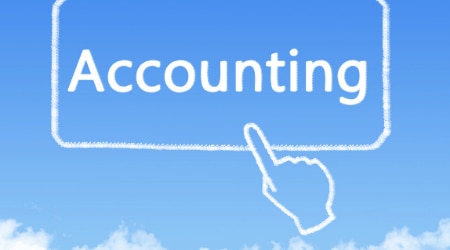Every small business owner should have at least some understanding of daily record-keeping practices and principles. Even if you hire an accountant to manage your books, you need to have a basic knowledge of how things work to ensure they’re being processed correctly.

Basic Accounting and Bookkeeping Principles
Accounting Methods
With the cash basis of accounting, income is recorded when it’s received, and expenses are recorded as they’re paid. The cash method does not take into account any accounts receivable or accounts payable. It strictly applies to payments from clients or sales once you receive the cash in-hand and when an expense clears your bank account.
Accrual accounting is completely different from cash accounting. Instead of recording income and expenses as they clear your bank, you record them as the income is earned and the expenses are billed. The accrual method does take into account accounts payable and receivable.
Accounts Payable
Accounts payable relates to money that you owe supliers and creditors. These are accounts you’re expected to pay for purchases owed, and they are considered liabilities.
Accounts Receivable
Accounts receivable is money you’re expecting from clients and customers for services rendered or products sold. These are funds you’re expecting to receive for work performed or products sold, and they are considered assets.
Journal Entries
As you pay for business expenses and receive income, you should create journal entries in your bookkeeping software to keep track of everything and to make sure your books stay balanced. This gives you an accurate picture of your revenue and costs, so you can produce financial reports.
In the event that you may have a loan that comes due or you need to record a non-cash transaction, your Accountant will correct your books with an adjusting journal entry.
Amortisation
Amortisation is the process of spreading out the cost of an intangible asset over a certain period of time (usually the entire lifespan of the item). It also refers to repayment of a loan or other debt that’s divided up into multiple installments over time.
Assets
All of the money in your deposit accounts and investments, plus the value of your home, furnishings, vehicles and other valuable belongings are considered assets. This includes products purchased for inventory, office furniture, art and anything else that’s of value.
Bookkeeping Systems
Single-Entry vs. Double-Entry
The single and double-entry bookkeeping methods are the ones most commonly used within small businesses. Your personal bank account uses the single-entry method, with debits and credits recorded as your balance increases and decreases. It tells you how much money you have in the bank, but it doesn’t account for where your money’s going in the future.
The double-entry method, on the other hand, records your expenses and accounts in the appropriate categories. It tells you how much you’re spending on a particular expense category and tracks future spending. The double-entry bookkeeping method is the most common strategy used by accounting software, large corporations and CPAs.
Balance Sheet
A balance sheet is a snapshot of a company’s financial standing at the end of a specific period. It contains a statement of the liabilities, assets, income, expenses and capital owned by the business. A balance sheet is usually produced at the end of every month and every quarter.
Capital: Debt vs. Equity
The cash you have in your accounts plus all of your assets and investments are known in business finance terms as capital. The two major types of capital are debt and equity.
Debt involves borrowed funds that are expected to be repaid from loans or other financing options. Equity relates to selling off interest in the company in exchange for money, and it is viewed as an investment in the business.
Cash Flow
Cash flow represents both money coming in and going out of your business accounts. There are different types of cash flow, including operational, investment and financing. Without a good amount of cash flow, your business will fail.
Debits and Credits
When using the double-entry bookkeeping method, your debits and credits always cancel each other out. You debit your expense account and credit your bank or other cash account. For example, if you purchased $125 worth of shipping and office supplies, you should debit the shipping category $100 and debit $25 to the office supplies category, and then you should credit your bank account $125.
In the event you’re depositing funds into your bank account, you debit the cash account and credit the income or deposit category it relates to. For example, if you were paid $1,000 from a client invoice, you record this transaction by debiting your bank account and crediting the specific client’s receivable account.
Depreciation
The cost basis of physical assets with a large amount of value can be depreciated to capture the loss of value as it goes down over time. This applies to computers, furniture, machinery and equipment used to start and run a small business.
The formula for depreciation takes into account the useful life of the product, the salvage value and purchase price (or cost basis):
Depreciation = (asset purchase price – salvage value) / useful life.
The difference between depreciation and amortisation is that depreciation relates to tangible assets, whereas amortisation pertains to intangible assets.
Liabilities
A liability is anything that relates to a debt or financial obligation. It is recorded on your company’s balance sheet. This includes accounts payable, income taxes, wages and other accounts owed.
Profit and Loss
An income statement, also known as a profit and loss statement, summarises the business income, expenses and total cost during a specific period of time. It shows the profit that the business earned during this time as well as the loss incurred, and it gives a positive or negative figure.
Understanding the basic vocabulary and principles of accounting will help you manage your books. Combine this knowledge with good accounting software and an accountant advisor, and your finances should be well taken care of.














